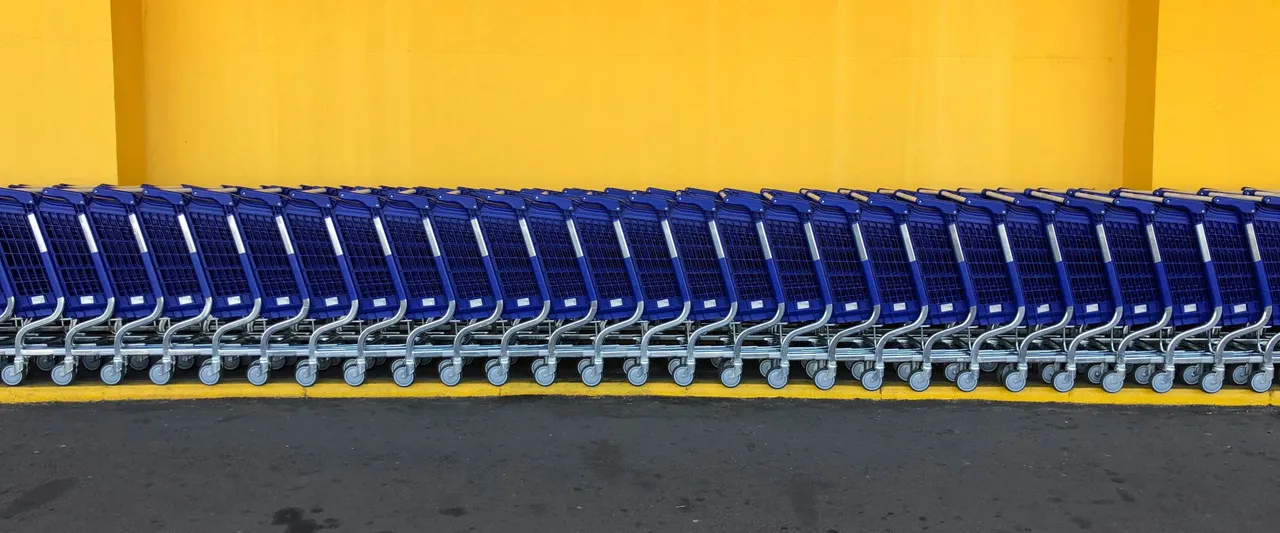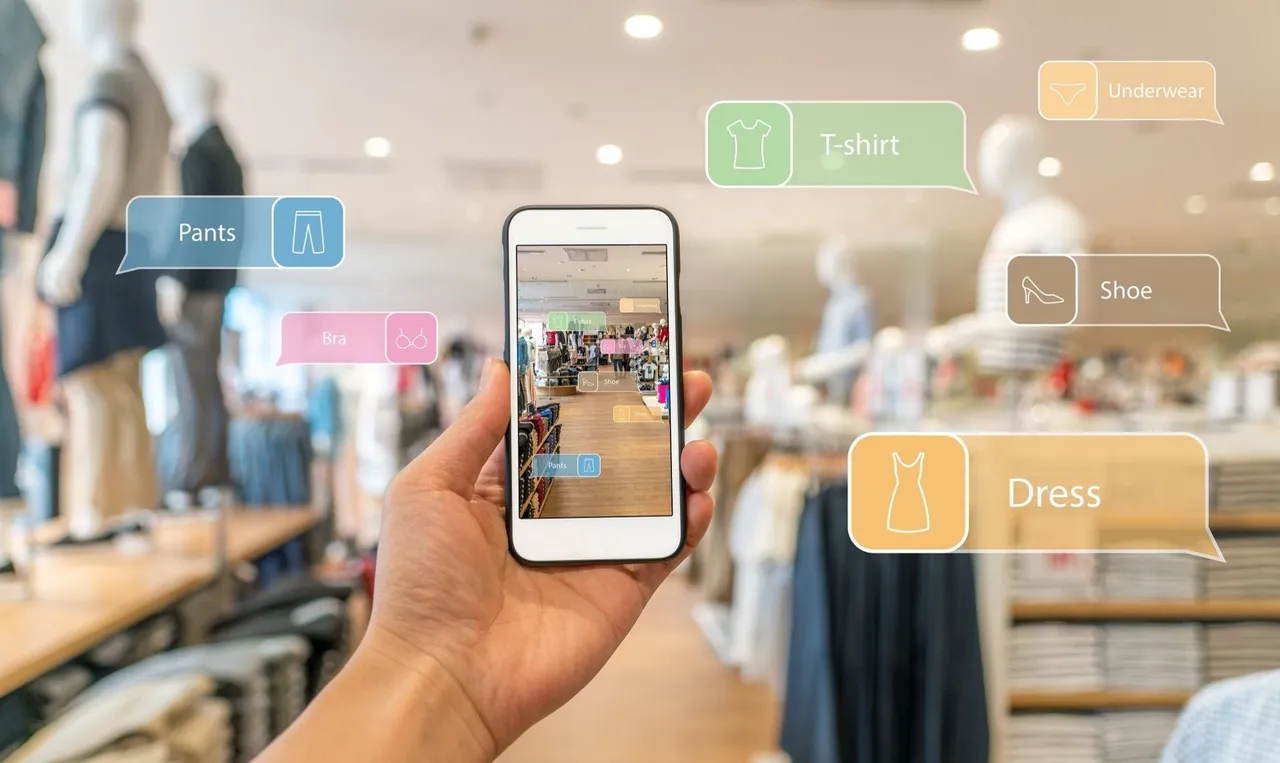Retail Apps: Your Secret Weapon Against Ecommerce Competitors
Ecommerce transformed traditional brick-and-mortar retail at the turn of the twenty-first century and altered the industry beyond recognition. Facing the threat of the ultimate disruption, retailers went online trying to balance two different business models—both offline and online retail. The integration proved to be a serious challenge, and online-first retailers still have a clear lead over the so-called brick-and-clicks in terms of online revenues and customer engagement.
Now, mobile has clearly become the driving force in online commerce, propelling it to the next level. Consumers use their mobile devices in a variety of contexts: to make a purchase on the go, research products at home, or augment their in-store shopping. A mobile app can serve as a glue connecting all the channels and touchpoints into a seamless shopping experience.
This comes as no surprise then, that the revenue share of mobile commerce is aggressively expanding. By 2018, it has already reached almost 40% of all ecommerce retail sales, with no signs of subsiding. If the trend persists, we’ll see the mobile retail sales hit $270 billion in the US alone as soon as this year.

How much are people spending on mobile in the US?
Online store sales overcame those of general merchandise (including department stores) in the US for the first time ever in February 2019, which is why retailers should be pressed to revisit their agendas and to introduce circumspect mobile strategies. If implemented wisely, a mobile strategy could help physical stores mitigate their shortcomings and stress their advantages over purely online shopping.
However, given the significant costs of retail app development and the implications of retailers’ mobile strategies for their business and the industry in general, it is critical to recognize early on how to integrate a retail app into a broader customer acquisition and retention context.
A mobile app, be it for customers, employees, vendors or any other stakeholders, also needs to be part of a holistic omnichannel strategy. The main goal of such mobile application development is to create a seamless shopping experience that leverages the retailer’s advantages and brand image.
This guide looks at why mobile should become the channel of choice for retailers looking to combat the surging competition from online-first businesses, including those employing social commerce. It also discusses the hands-on approach to successful custom retail apps development.
Mobile Is the New Battlefield for Brick-and-Clicks
Traditional retailers are lagging behind their online-first competitors. Among the top ten mobile shopping apps in the US by popularity, there are only four brick-and-clicks as of 2019.

Most popular mobile shopping apps in the US, 2019
The upsurge of social commerce, or sales through social networks, doesn’t make it easier for traditional retailers either.
Social networks have long been considered a powerful marketing communication channel. With such social media giants as Facebook, Twitter, and Pinterest experimenting with “Buy” buttons and messenger chatbots, consumers get an opportunity to make purchases without leaving their favorite social app.
There are at least three reasons why social commerce might evolve into a formidable competitor to retail apps:
- Less friction. Social commerce removes a good portion of friction from the purchasing experience. A person coming across a product they like or learning about an enticing promotion no longer needs to go to the seller’s website or install the seller’s app to complete a purchase.
- Trust. Social media provide abundance of peer recommendations and reviews, which have become an integral part of the shopping experience for most consumers, especially Millennials and Gen Z shoppers.
- Massive and engaged user bases. According to Global Web Index, in 2019 the average daily social media usage reached 2 hours 38 minutes in North America, with 30% of users claiming their major reason for using social media is to research or find a product to buy.
To be sure, at present social commerce can hardly pose a serious threat to retailers’ apps as there are still concerns over security and authenticity of this channel. However, while its potential is yet to be unleashed, full-fledged social commerce might prove to be a major disruptor.
This leaves us with the question: do traditional retailers need to match their online competitors by all means, or search for potential synergies between mobile apps and physical stores? The answer might be in the latter.
In-store Apps to Bridge the Competitive Gap
Mobile apps can significantly increase in-store sales as well as come to the rescue in the face of staff shortages and work overload.
A functional in-store digital assistant can augment shopping floor staff and relieve them of some burden, for example by:
- Serving product information and suggesting complementary items, as well as special offers and sales promotions
- Performing instant checks of item stock availability across various locations
- Notifying a responsible unit of any merchandize running short in real time
- Checking a customer’s purchasing history and suggesting most relevant offering based on it
- Making delivery arrangements, and more
Walmart’s new Store Assistant app is one of such little digital helpers for the largest US grocery retailer’s customers. Introduced earlier this year, the app brings together all of the brand’s other in-store mobile solutions and offers a comprehensive list of value-adding features to shoppers. The app goes into ‘in-store mode’ automatically, with shopping lists, customer reviews, product search, and Walmart Pay all at the user’s fingertips.
Innovate like Walmart with Iflexion's mobile consultants
Packing Retail Apps with the Right Features
The Walmart example provides a snapshot of must-have features for a retail app to be called both helpful and engaging.
In order to follow suit and achieve outstanding results, retailers need to carefully consider the functionality question early on in their mobile application development process.

Most important factors in mobile app shopping
The following app features can help brick-and-clicks leverage advantages of their physical presence specifically and, when designed properly, refurbish customer experience altogether.
In-store mode
As proved by Walmart, a mobile app might be a perfect bridge between traditional shopping and its online counterpart. Such app features as shopping lists and integration with other customers’ reviews help streamline in-store experience. The ability to scan barcodes and add items to a virtual shopping basket also helps consumers stay on budget.
Mobile payments and wallets
Mobile technologies are reshaping retail by enabling new payment methods. NFC mobile payment solutions, such as Apple Pay and Android Pay, are gaining momentum as they ensure faster and securer payments, with nothing but a smartphone needed to make a payment.
For physical stores, a faster payment processing could mean a decrease of the time customers spend waiting in a line, which is highly important for the overall customer satisfaction. Integrating these frictionless payment solutions with loyalty programs can be the next step in this in-store experience evolution.
Geo-targeted mobile alerts
In 2019, proximity marketing is finally reaching its stage of maturity, thanks to such technologies as beacon-enabled apps and efficient connectivity protocols.
In this context, a retail app can serve as a window display extension, wooing customers in the immediate proximity of the store with a personalized offering via a push notification. The offering can be tailored not only to the customer’s profile and interests but also to the store’s current promotions at this specific location.
Full access to product information
In a physical store, a person has a chance to check the look and feel of a product or test it before purchasing. That is one of the major advantages of in-store shopping. However, many people require more information than just product characteristics to make purchase decisions.
They prefer to check reviews and customer feedback first, which can be easily done when shopping online. If a mobile app features peer reviews and ratings, customers are less likely to postpone their purchase decisions.
Streamlined click-and-collect
The click-and-collect business model is a popular alternative to door-to-door delivery, and the one that leverages retailers’ physical presence. A mobile app could further streamline the process.
For instance, an in-app chat can allow a customer to send a message to the collect point clerk when approaching the store, to make sure the order is ready for an immediate pickup.
Integration with social networks
In a bid to attract a lucrative share of the social media traffic, brands should consider integrating their mobile apps with social networks. Such integration should be two-way, allowing users to log in via their social applications of choice, share product information with their peers, and leave reviews on the retailer’s social pages. It’s the best way to please customers and tap into the infinite marketing potential of the social channel.
Loyalty programs and mobile coupons
Making customer loyalty programs available through a branded mobile app accomplishes two important tasks. First, it motivates customers to install the app, thus giving a boost to the user reach. Second, it fosters customer engagement with the app, increasing the usage frequency at the same time.
8 Sins of Retail Apps to Avoid
Mobile apps may be powerful tools for dragging online shopping audiences back into physical stores, but not all consumers find it convenient to shop using mobile devices.
Retailers themselves might be the ones to blame for this. Consumers demand convenience, speed, security, and a personalized experience. Retail apps that do not meet these requirements are likely to be quickly abandoned or replaced.
Here are the most common shortcomings impeding customer engagement that retailers should keep in mind when tackling mobile app development:
Intrusive Sign-up
Sign-up forms that spill across multiple page and require too much personal information can make an unfavorable impression on a user from the very beginning. If, in addition to that, an app requests numerous permissions, it can raise a user’s suspicion and impair engagement.
On the contrary, a chance to test an app and gauge its value prior to signing-up can substantially increase the app adoption rate.
A Cluttered User Interface
The failure to consider mobile display limitations and cut the clutter will inevitably compromise the convenience and ease of navigation. Such poorly designed apps nudge users into switching to retailers’ websites in the best-case scenario. In fact, more than half of the consumers who are reluctant to use retail apps prefer shopping online via retailers’ websites.

Reasons for not using retail apps
Limited Search Capabilities
With the limited mobile real estate, it becomes even more acute to laser-cut product catalogs into sections with easy-to-navigate product categories. These could be then drilled down to the user’s perfect find with a selection of search filters.
In 2019, you can’t overlook voice search either. Incorporating one into your mobile app browsing experience can minimize user effort and shorten the path to the product discovery.
Lack of Consistency
Erratic navigation and the lack of consistency in screen layouts, action elements and patterns in a retail app would compromise both convenience and speed. Furthermore, the lack of consistency in UI design across every digital channel would only make consumers spend more time learning how to navigate the app.
Complex Checkout
One of the biggest issues in mobile commerce is the high level of cart abandonment. Complicated multi-page checkout, where customers need to fill out poorly designed forms and enter their personal details every time, might discourage them from completing purchases via the app.
Lack of Personalization
Treating all customers, even within their shared segment, like the same person, is a mistake that inevitably puts off shoppers craving personalized experiences.
To enable such personalization in their mobile apps, retailers are advised to build the apps into unified back-office systems with all the digital tools sharing the same version of truth on every customer. This approach would further enable a truly omnichannel journey, where customers can start browsing isles in a physical store, research more about the product while at it, yet complete their purchase via the online version of the store—all while being recognized and served accordingly at each of these touchpoints.
Poor Security
Security assurance is key to customer engagement as security concerns are ranked among the top mobile shopping roadblocks. This comes as no surprise, given the regular newsflashes about retailers being attacked by cybercriminals.
As revealed in the 2019 KPMG Consumer Loss Barometer, apps specifically remain the top technology that 78% of the surveyed consumers fear to be compromised. When it comes to business executives meeting these consumers halfway, however, there is a major disparity in both parties’ expectations.

Do security professionals really know what consumers want?
To fix this, retail app owners should pay extra attention to ensuring data security at each step of the transaction, in order to avoid losing a big chunk of their customer base to an occasional data breach.
Low User Acquisition
User acquisition is the last yet not least important aspect to consider when launching a mobile retail app. No matter how well-stuffed with useful features the app is, these features won’t compensate for the lack of potential users’ awareness.
The task of marketers more than anyone else’s, user acquisition strategies should be developed to communicate the various benefits that such apps bring to the table via the channels where the prospective users are most likely to find this information.
The takeaway? To replenish your retail app development team with business analysts and marketers who understand your customers’ mentality like their own, and can put these insights to use.
Ready to Launch Your Retail App?
Challenges abound, but with a thorough strategy at hand, retail companies can truly turn their mobile apps into major business enablers.
Iflexion has been helping retailers to reinforce their competitive advantages through technology for the past 20 years, and now we’re here to tell you more about the best way to bring your retail app to the market.
Get your brand a retail app developed by professionals












